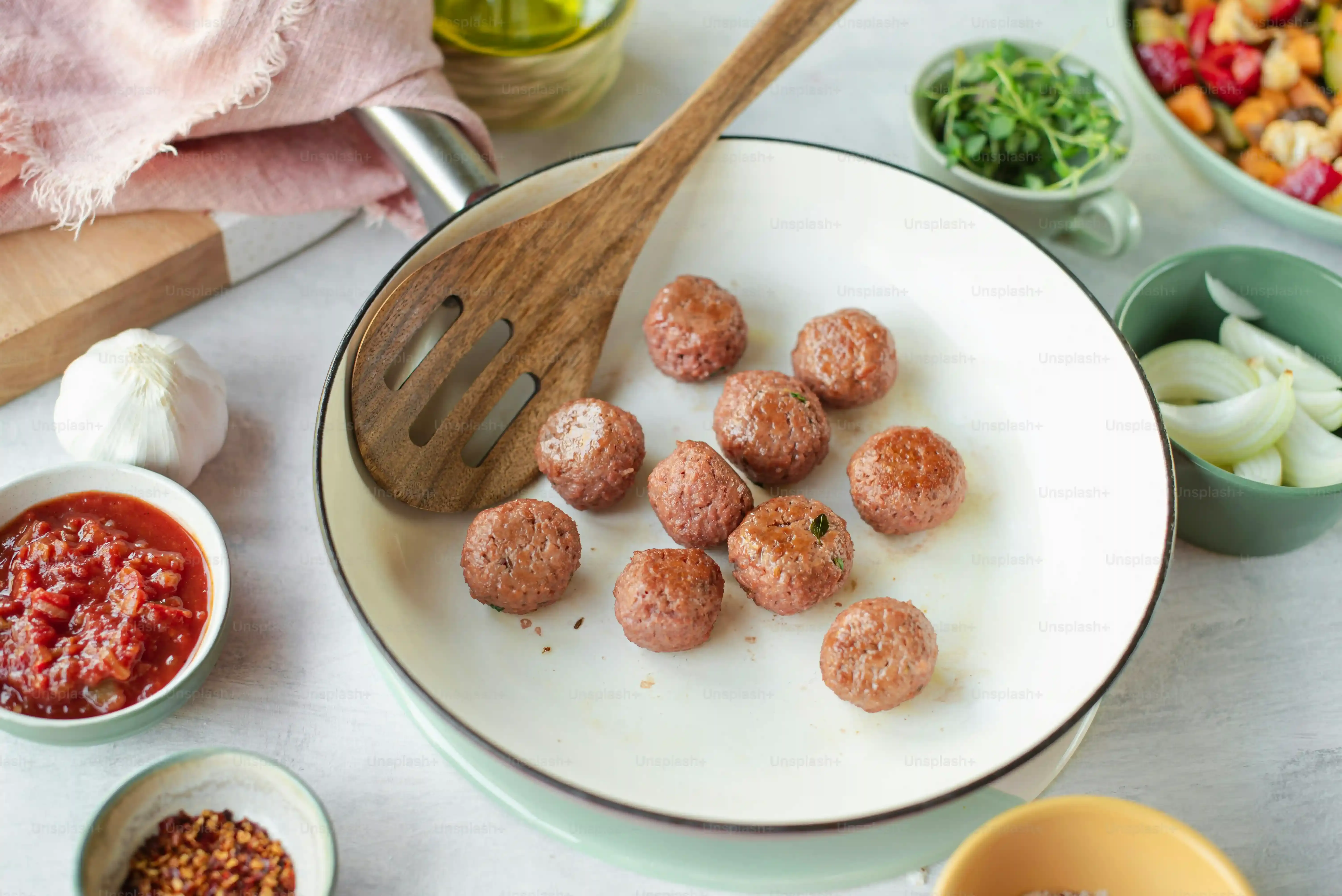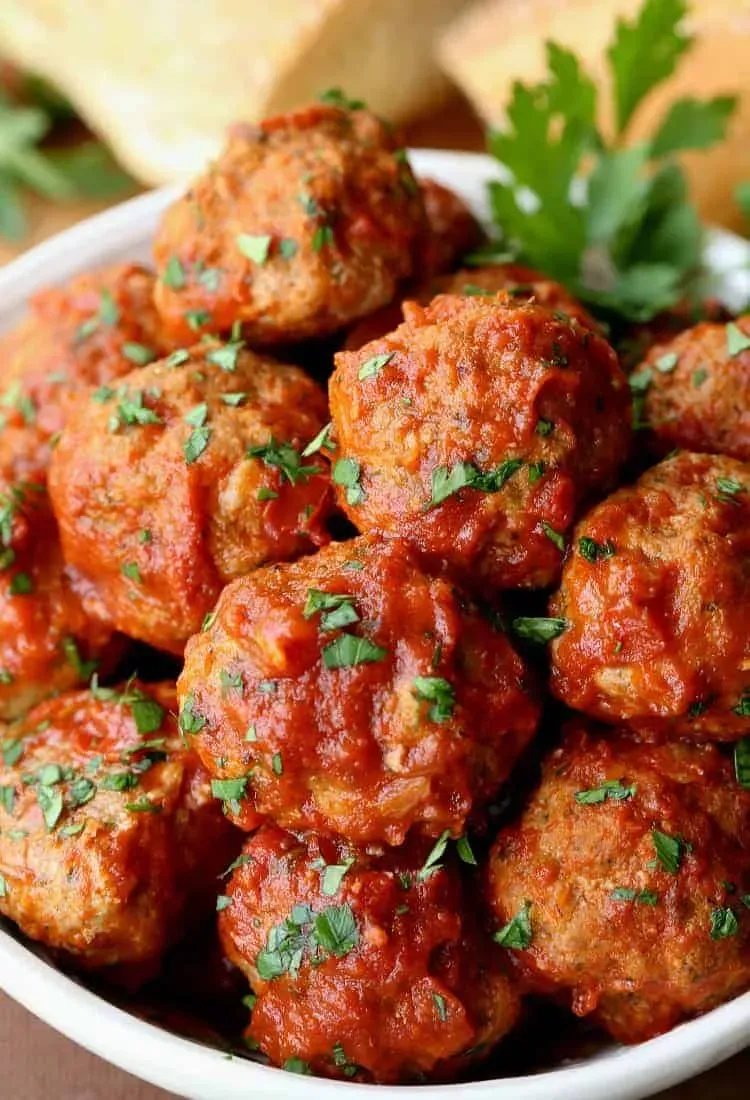Table of Contents
Everyone seems to have *a* meatball recipe, but finding *the* one, the truly classic **grandma's italian meatballs recipe** that tastes like Sunday dinner and childhood memories, can feel like searching for a culinary unicorn. Too many recipes yield dry, dense little bricks instead of the tender, juicy spheres you crave. You want that perfect bite, full of flavor that melts in your mouth, not something you need a gallon of sauce to wash down.
Why Grandma's Italian Meatballs Recipe Stands Apart

Why Grandma's Italian Meatballs Recipe Stands Apart
So, you're diving into the world of meatballs, huh? That's great. But let's be real, not all meatballs are created equal. There's a reason people chase that elusive **grandma's italian meatballs recipe**. It's not just about ground meat and sauce; it's about texture, flavor depth, and that certain something store-bought or quick-fix versions just can't replicate. Generic meatballs often end up dry or bland, tasting more like seasoned cardboard than tender, savory bites. Grandma's recipe, on the other hand, usually involves a few crucial steps and ingredient choices that make all the difference, resulting in meatballs that are moist inside with a beautiful exterior.
The secret often lies in the blend of meats, the binder, and how everything is handled. It's not rocket science, but it requires attention to detail. You're not just mixing stuff together; you're building flavor and ensuring tenderness from the start. Many recipes skimp on fat content or use too many breadcrumbs without proper soaking, leading to those regrettable dry outcomes. A true **grandma's italian meatballs recipe** balances these elements carefully.
- Uses a specific blend of meats (often beef, pork, sometimes veal).
- Employs a binder that adds moisture, not just bulk.
- Relies on gentle mixing to prevent tough meatballs.
- Often involves simmering in sauce, which infuses flavor and keeps them tender.
Think about the texture difference. A great meatball should yield slightly when you cut into it, revealing a moist interior. It shouldn't crumble into dust or bounce like a rubber ball. This comes down to the ratio of meat to binder, the type of binder used (often breadcrumbs soaked in milk or water), and not overworking the mixture. Overmixing develops gluten in the breadcrumbs and makes the meat tough. It's a common pitfall for beginners.
Furthermore, the flavor profile in a classic **grandma's italian meatballs recipe** is layered. It's not just salt and pepper. You'll find fresh herbs, garlic, often a good amount of Parmesan cheese, and sometimes a pinch of nutmeg. These elements contribute to a complex, savory taste that complements the meat beautifully. It’s this combination of technique and thoughtful ingredient selection that explains **why grandma's italian meatballs recipe stands apart** from the rest.
Gathering Your Ingredients for Authentic Italian Meatballs

Gathering Your Ingredients for Authentic Italian Meatballs
Choosing the Right Meat Blend
let's talk meat. You can't make amazing meatballs with just any old ground beef you grabbed on sale. A truly great **grandma's italian meatballs recipe** starts with the right foundation, and that means a blend. Using only lean ground beef is a one-way ticket to dry, sad meatballs. Fat equals flavor and moisture during cooking. Most classic recipes call for a mix of ground beef (ideally 80/20 or 85/15 lean-to-fat ratio), ground pork, and sometimes ground veal. The beef gives it substance, the pork adds moisture and a slightly different savory note, and veal, if you use it, contributes tenderness. Think of it as a culinary trifecta. Don't be afraid of a little fat; that's where the magic happens. Trying to be "healthy" here is a mistake; you'll end up with something closer to a hockey puck than a tender meatball.
Binders and Flavor Essentials
Beyond the meat, the binder and flavorings are non-negotiable. This isn't just filler; the binder is crucial for texture. We're talking breadcrumbs, usually stale or day-old bread soaked in milk or water. This creates a panade, a starchy paste that traps juices as the meatballs cook. Using dry breadcrumbs straight from the can is another common misstep that leads to dryness. You need that moisture infusion. Then come the flavor powerhouses: fresh garlic (minced, not powdered, please), finely chopped fresh parsley, grated Parmesan cheese (use the real stuff, not the sawdust in a green can), and often an egg or two to help hold it all together. Some families add a pinch of nutmeg or red pepper flakes for a little warmth. These simple additions transform plain meat into something truly special.
- Meat Blend: 80/20 or 85/15 Ground Beef, Ground Pork, (Optional: Ground Veal)
- Binder: Stale bread soaked in milk or water
- Aromatics: Fresh minced garlic, finely chopped fresh parsley
- Cheese: Grated Parmesan Reggiano
- Other Essentials: Eggs, Salt, Black Pepper
- Optional Flavor Boosters: Nutmeg, Red Pepper Flakes, Onion (finely grated)
The StepbyStep Guide to Crafting Grandma's Italian Meatballs

The StepbyStep Guide to Crafting Grandma's Italian Meatballs
Mixing Your Meatball Magic
Alright, you've got your glorious blend of meats, your soaked breadcrumbs, and all those fragrant herbs and cheese laid out. Now comes the crucial part: mixing. Resist the urge to just shove everything into a stand mixer or go at it like you're kneading bread dough. That's how you get tough, dense meatballs that bounce off the plate. The goal here is to combine everything just until it's incorporated. Your hands are the best tools for this. They allow you to feel the texture and ensure you don't overwork the mixture. Gently fold the ingredients together. Imagine you're fluffing a pillow, not trying to flatten it. This gentle touch is key to the tender texture that defines a truly great **grandma's italian meatballs recipe**.
Shaping the Perfect Meatball
Once your mixture is ready – meaning everything is just combined, no streaks of unmixed ingredients, but not a uniform paste either – it's time to roll. Aim for meatballs roughly the size of a golf ball, maybe slightly larger. Consistency in size means they cook evenly. Wetting your hands slightly can help prevent the mixture from sticking to you, but don't make them so wet that the meatballs become soggy. Roll them gently between your palms. Again, don't pack them too tightly. A light touch is essential. You want them to hold their shape but still be tender inside. This step is simple, but doing it correctly makes a difference in the final texture.
- Use wet hands to prevent sticking.
- Roll gently, don't pack tightly.
- Aim for consistent size (golf ball-ish).
- Place formed meatballs on a plate or tray.
Cooking Methods: Browning and Simmering
You've got a tray of perfectly formed meatballs. Now what? The classic **grandma's italian meatballs recipe** usually involves two cooking phases. First, a quick browning to develop flavor and color on the exterior. You can do this in a hot pan with a little olive oil, turning them gently until browned on all sides. Don't cook them all the way through, just get that nice crust. Alternatively, you can bake them on a baking sheet at around 375°F (190°C) for about 10-15 minutes until they're browned. This is less messy. The second, and arguably most important, phase is simmering them in your tomato sauce. This is where they finish cooking slowly, absorbing the flavors of the sauce and becoming incredibly tender and juicy. Let them simmer for at least an hour, ideally longer, submerged in that rich tomato goodness. This slow simmer is the secret handshake of moist meatballs.
Method | Benefit | Tip |
|---|---|---|
Pan-Searing | Quick browning, deep flavor crust | Don't overcrowd the pan. |
Baking | Less messy, cooks evenly | Use a wire rack on a baking sheet for air circulation. |
Simmering in Sauce | Tenderizes, infuses flavor | Simmer low and slow for at least an hour. |
Tips and Tricks for Perfect Grandma's Italian Meatballs

Tips and Tricks for Perfect Grandma's Italian Meatballs
The Temperature and the Touch
you've got the mix ready, but before you start rolling, let's talk about the little things that make a big difference in your **grandma's italian meatballs recipe**. First off, cold ingredients matter. Keeping your meat, eggs, and even the soaked bread cold helps everything bind better and prevents the fat from rendering out too early. Think of it like making pastry dough; cold is your friend. And again, the touch. I know I hammered this home before, but it's worth repeating: be gentle. Overmixing is the death knell of tender meatballs. Mix until just combined. If you knead it like bread, you'll end up with tough, rubbery little spheres. Use your hands, feel the mix, and stop as soon as everything is incorporated. It should feel slightly loose, not dense and sticky.
Don't Be Afraid to Taste and Rest
Here's a tip that might sound weird, but trust me on this for your **grandma's italian meatballs recipe**: taste your mixture before you cook it. I know, raw meat, but a tiny pinch fried up in a pan for a minute will tell you if your seasoning is right. Is there enough salt? Enough pepper? Does the garlic punch through? Adjust *before* you roll everything. It's much easier than trying to fix bland meatballs after they're cooked. Also, letting your meatball mixture rest in the fridge for 20-30 minutes before rolling can help the flavors meld and make the mixture easier to handle. It allows the breadcrumbs to fully absorb moisture and the seasonings to distribute. It's a small step, but it contributes to a more cohesive and flavorful meatball.
- Keep ingredients cold for better binding.
- Mix gently by hand; avoid overworking.
- Fry a small test piece to check seasoning.
- Rest the mixture in the fridge before rolling.
- Ensure consistent meatball size for even cooking.
Serving and Storing Your Delicious Grandma's Italian Meatballs

Serving and Storing Your Delicious Grandma's Italian Meatballs
Alright, you've put in the work, followed the steps for that perfect **grandma's italian meatballs recipe**, and now you've got a pot of tender, simmering goodness. The most classic way to serve these beauties is piled high on a mountain of spaghetti, drowning in that rich tomato sauce. But don't stop there. They're fantastic tucked into crusty rolls for meatball subs, sliced on pizza, or even served on their own as an appetizer with toothpicks (though they might be too big and juicy for polite finger food, frankly). For leftovers, let them cool completely before transferring to an airtight container. They'll keep happily in the fridge for up to 4-5 days. For longer storage, freeze them, either in their sauce or plain, in freezer-safe bags or containers. Thaw them overnight in the fridge and reheat gently in sauce on the stovetop. Trust me, a stash of these frozen meatballs is a future-you lifesaver.
Bringing Grandma's Meatballs Home
You've navigated the ingredients, mastered the technique, and now you have a batch of truly classic Italian meatballs. No more dry, flavorless disappointments. These are the kind that spark memories, soak up sauce beautifully, and disappear from the plate faster than you can make them. Making grandma's italian meatballs recipe isn't just about following steps; it's about understanding the simple principles that create that perfect texture and rich flavor. Enjoy the results – they speak for themselves.